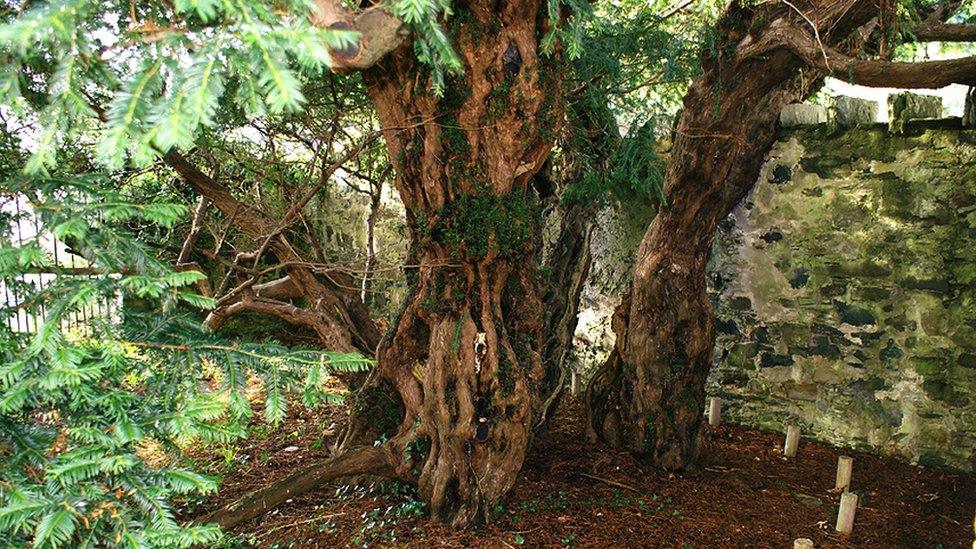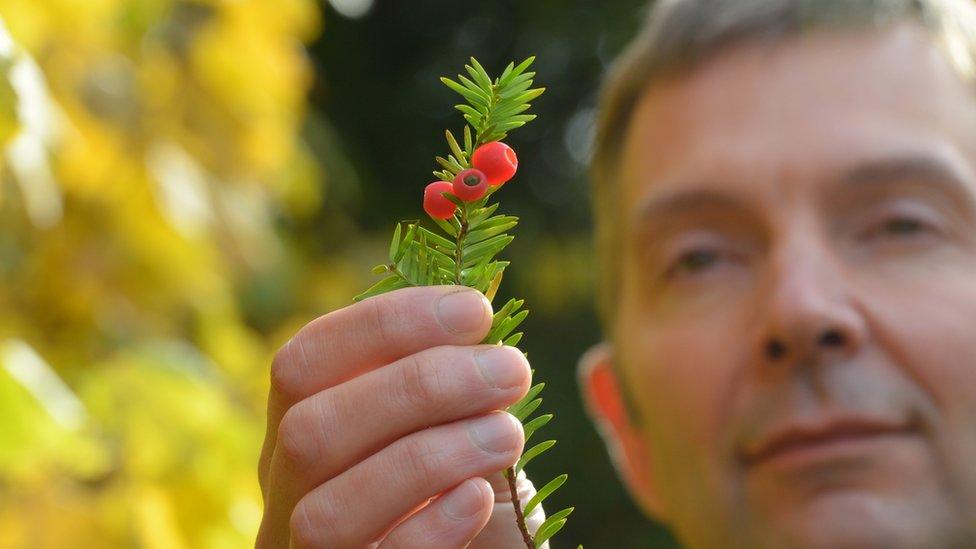Berries show ancient Fortingall yew tree is 'changing sex'
- Published

The tree has been calculated to be anywhere from 2,000 to 5,000 years old
A Perthshire yew tree, believed to be one of the oldest in Europe, has started changing sex.
The Fortingall Yew, reputed to be up to 5,000 years old, has started sprouting berries on one of its upper branches - something only female trees do.
Scientists at the Royal Botanic Garden in Edinburgh, said it was "quite a surprise" to find berries on the tree, in the churchyard of Fortingall.
The berries have been collected for protection and to be studied.
Their seeds will be included in a project to conserve the genetic diversity of yew trees around the world.
The tree is said to be one of the oldest living organisms in Europe - according to local legend, Roman prefect Pontius Pilate was born in its shadow.
'Quite a surprise'
Dr Max Coleman, a science communicator at the Royal Botanic Garden Edinburgh, discovered the berries on the tree.
He said: "Yews are normally either male or female and in autumn and winter sexing yews is generally easy.
"Males have small spherical structures that release clouds of pollen when they mature. Females hold bright red berries from autumn into winter.
"It was, therefore, quite a surprise to me to find a group of three ripe red berries on the Fortingall Yew when the rest of the tree was clearly male."

Dr Coleman said it was quite a surprise" to find the berries on the normally male tree
He added: "Odd as it may seem, yews, and many other conifers that have separate sexes, have been observed to switch sex. It's not fully understood - normally the switch occurs on part of the crown rather than the entire tree changing sex.
"In the Fortingall Yew it seems that one small branch in the outer part of the crown has switched and now behaves as female."
It is difficult to calculate the age of ancient yews, as their annual growth rings rot away.
A girth measurement in 1769 suggested the Fortingall Yew could be up to 5,000 years old, although more recent estimates suggest between 2,000 and 3,000 years.